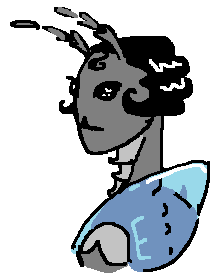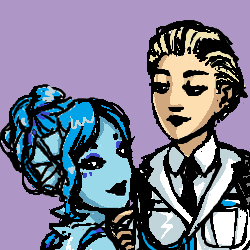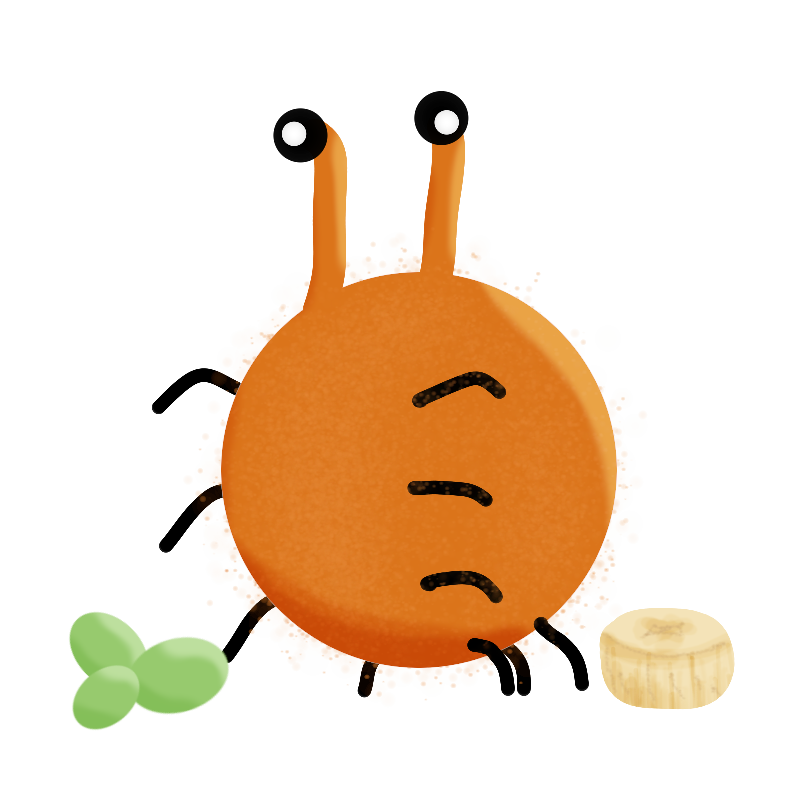Kara
About Solaris | Guide to Solaris | Prologue
Physiology
The hard shells are not true exoskeletons. The Kara still have an internal skeleton, except in their hands and feet. The hard shell of their extremities are instead held together with an inner membrane. A similar membrane can be found in their joints and helping to bind the plates together. Some Kara are capable of independently moving even their binding membrane, or train to learn it. Oscillating plates are a key component of some traditional Mercurian dances. Kara are not born with the plates. Their skin hardens as they come into adulthood. Some Kara will deliberately agitate or scar their plates to make them grow in stronger, while others use balms to make theirs smooth and glossy. Young Kara, whose skin is still soft, experience much more sensation than older Kara. Their nervous systems aren't well adapted to this level of sensation, and so young Kara are easily overwhelmed.| Humanoids | Kara · Mori · Fei · Human · Lysa · Minos · Harpid · Sirenes · Oceanid |
|---|
| ☿ Mercury | ||||||||||||
|---|---|---|---|---|---|---|---|---|---|---|---|---|
|
Antennae, Kara antennae are usually tough and club-like.
Ceratinous Plates, Thick, segmented plates cover much of their skin.
Common
Rare












"The threats the ancient Kara evolved to survive no longer exist, but their existence is evident in Kara physiology. " It's like pronghorns being too fast for current land predators of their region.
Ooh I'll need to read about them!